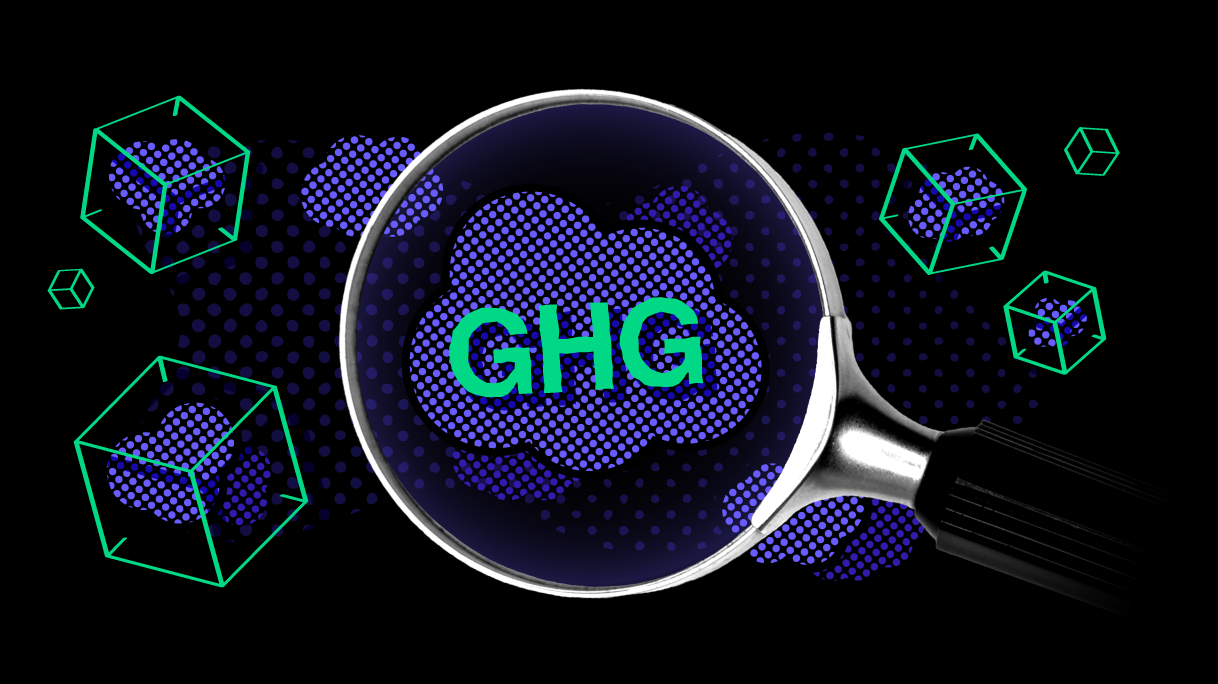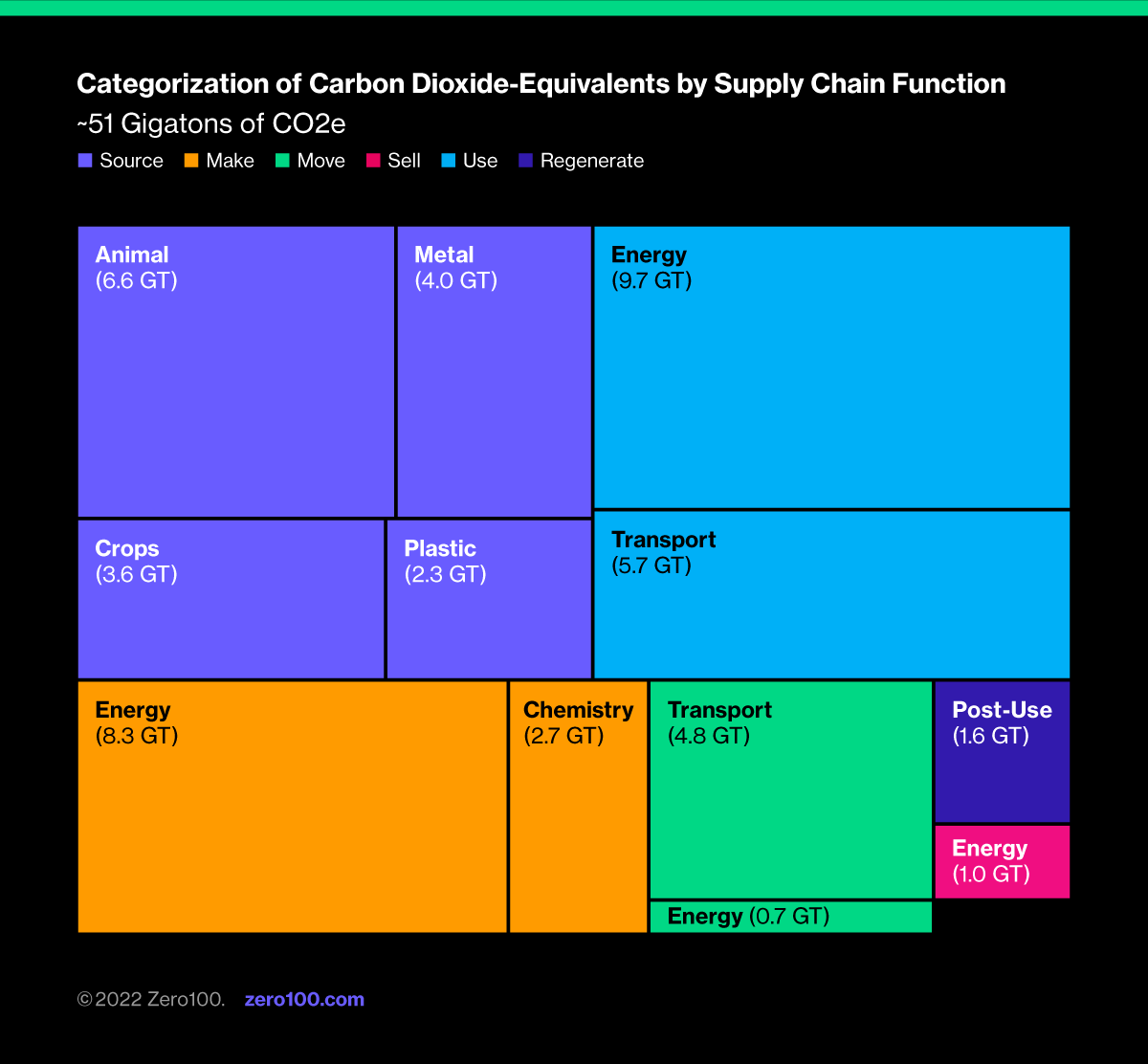
Choking on Scope 3 GHG: Tech Vendors to The Rescue on Carbon Management
Many companies are on the right path towards decarbonizing supply chains but getting deep enough into Scope 3.1 "purchased goods and services" is still a sticky roadblock for most. Technology can help break the analysis paralysis, especially for mid-sized companies that don't have the resources to do the n-tier data gathering alone.
Decarbonizing supply chains is a lot more than greening your factories – a.k.a., Scope 1 and 2. It is also, and much more messily, getting your suppliers, and their suppliers, and their suppliers to do the same – a.k.a., Scope 3. The problem is that greenhouse gas (GHG) accounting gets complicated very quickly on purchased materials that may be way upstream of your final products.
Big companies like Unilever, IKEA, PepsiCo, and Adidas can afford to do this themselves and usually have a decent view on the Scope 3 emissions for the top 10% or so of their suppliers. Beyond that however, things get hazy. Mid-sized companies usually can’t afford to buy this expertise, so they are forced to rely on surveying up the supply chain, but with a lot less clout than mega-brand name companies.
The net effect is that everyone is asking everyone else for information that no one really has.
The Devil Is In the Details
I once worked with a great supply chain scientist, Dr. Steven Stokes, on a project for O-I Glass who makes more than half of all the glass bottles in the world. The question was: what’s the lowest carbon footprint between glass, aluminum, and plastic (PET) for drinks packaging? The answer: It depends on where and when a bottle gets made, how it gets moved, and whether it gets recycled or reused, more than it depends on which material it is made of.
Carbon hunters everywhere know the frustration attached to the fluidity of this puzzle, and the eye-rolling from everyone else who is tired of hearing how complex it all is. For the most ardent climate activists this whack-a-mole problem can be an excuse to demonize everything in our ‘consumer culture’, leading some to rage unproductively in the face of reality.

Increasingly, the conclusion being drawn among even the biggest and best companies is to stop sweating the details but keep moving on the broad strokes.
Break the Analysis Paralysis With Technology
This is where tech vendors come in. No one has a tech solution for Scope 3 carbon management that will deliver serious precision, and yet investing in anything is a good idea to simply get moving in the right direction. Regulations (EU, US, and India among others) are coming fast, and most big companies have long since announced public goals to get to net-Zero carbon, which means they’ll be asking soon if they haven’t already.
Here is a short list of vendors worth a look if you’re still stuck in analysis mode:
LCA Heritage Vendors: Two that appear in many conversations are Sphera and Enablon. Both have backgrounds doing product Lifecycle Analysis (LCA) and therefore each is well-schooled in the science of GHG emissions analysis. For those looking specifically to tackle supply chain carbon, however, this strength might be more added complexity than help since it includes product-in-use GHG emissions, which is basically the job of R&D and product design. Still, the thought process is appropriate and the tie back to sourcing-as-partner to new product development will create momentum for seriously cutting carbon footprints longer term.
Big Guy Bolt-Ons: SAP and Salesforce are two giant enterprise vendors with respectable capabilities that can be used effectively enough as a starting point for anyone already running their software for other business processes. Typically, these kinds of module extensions offer decent if clunky capabilities and user group support networks plus internal specialists to help share best practices. Both are new to the game and neither has a great track record of building best-in-class functionality outside of their core competence (ERP for SAP and CRM for Salesforce), but both will get you started.
Mid-Tier Carbon Accounting Specialists: This group includes a still growing set of venture funded start-ups with expertise in procurement and accounting and a practical but precise approach to getting the ball rolling easily. Two that stand out are Emitwise and Carbmee. Both are focused on simplifying carbon data collection, especially in the Scope 3.1 “purchased good and services” category, to offer carbon accounting, carbon management, and carbon footprinting. One big advantage with both is the relative speed of roll out, which is a win for mid-sized companies being grilled by their customers.
Get Started Soon
The good news about the extreme complexity of Scope 3 GHG is that nearly every company in any manufacturing industry can do good by simply trying to get a grip on measuring, managing, and cutting upstream supply chain carbon. The bad news is that you probably can’t keep up with a spreadsheets-only approach, so look for a vendor who fits your size and attitude and see what they can do for you.